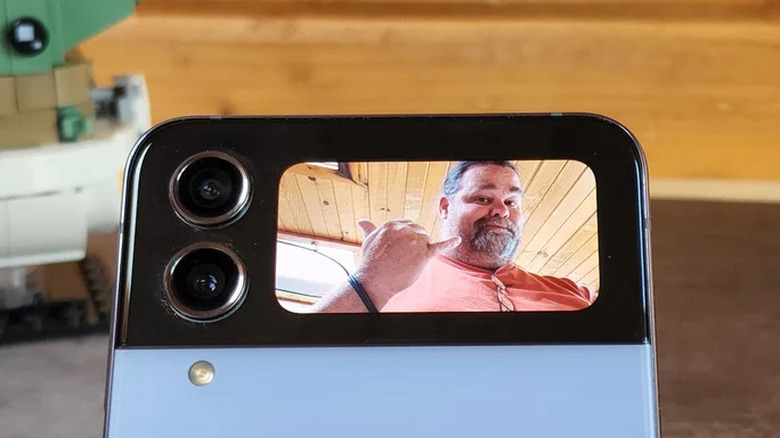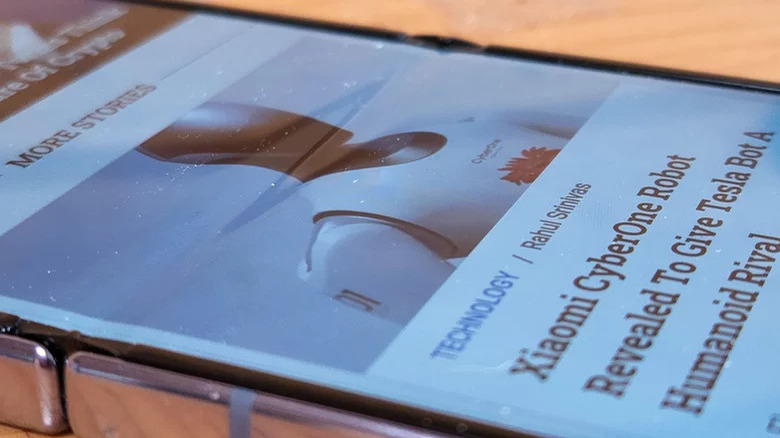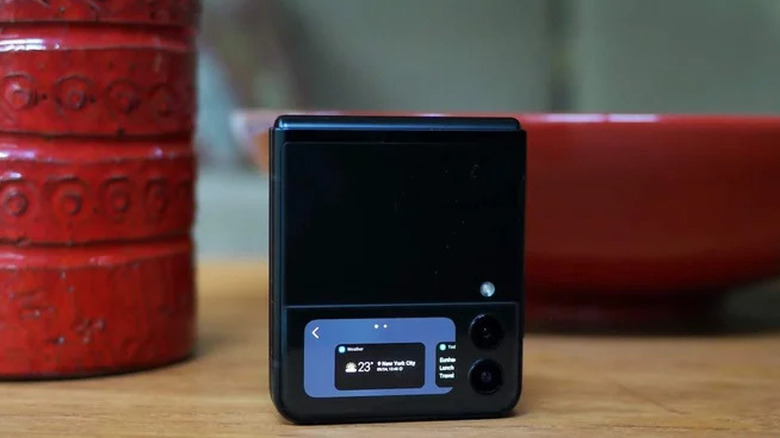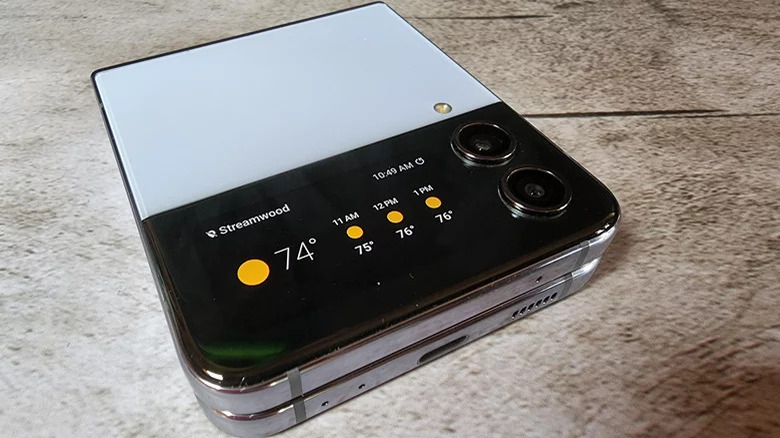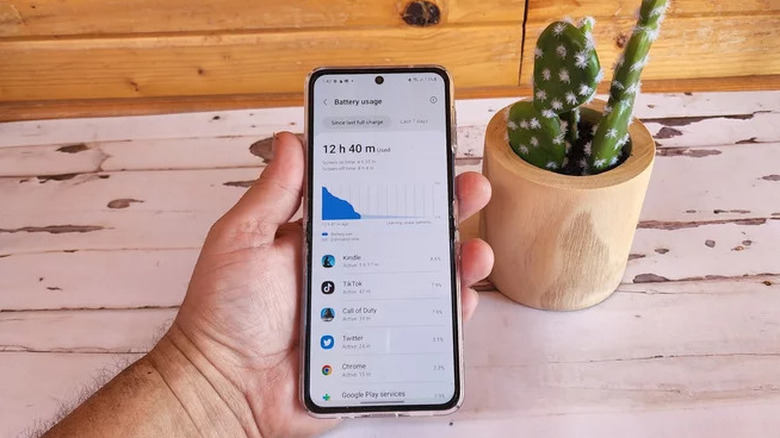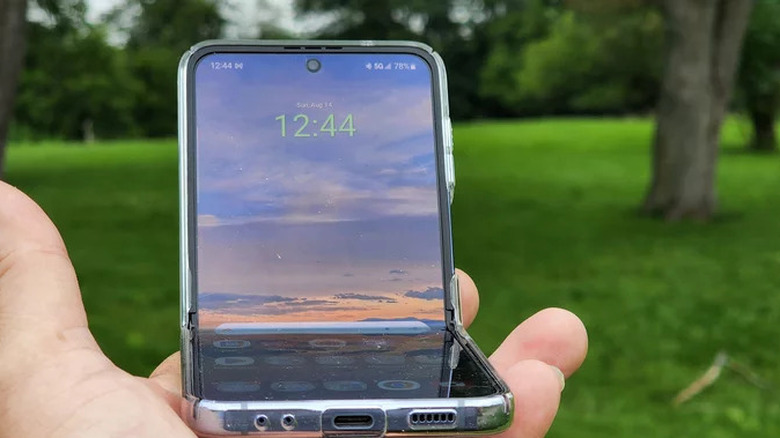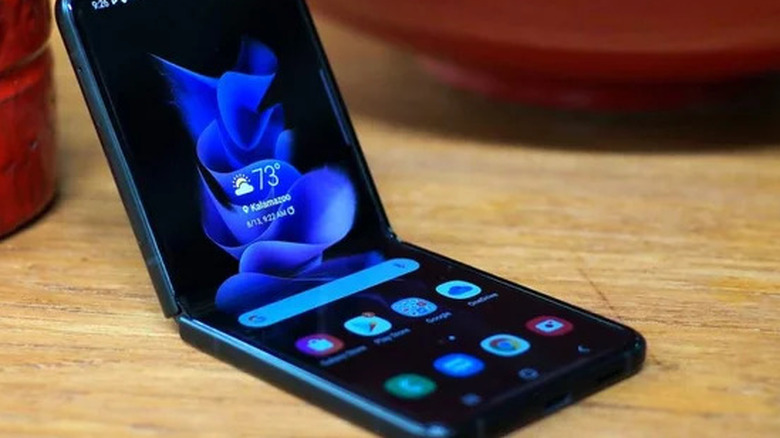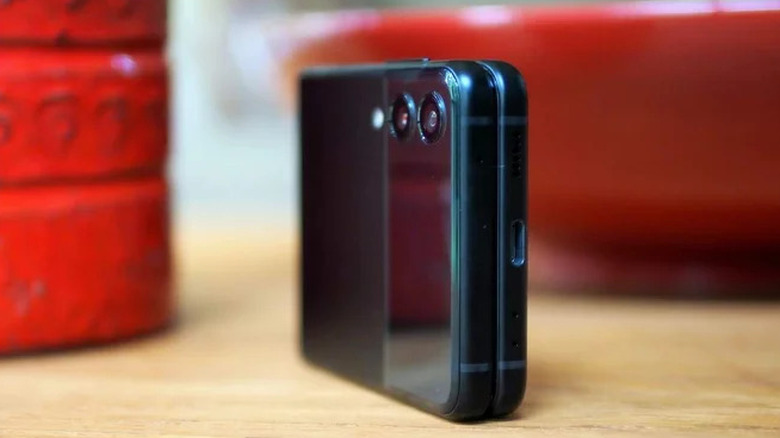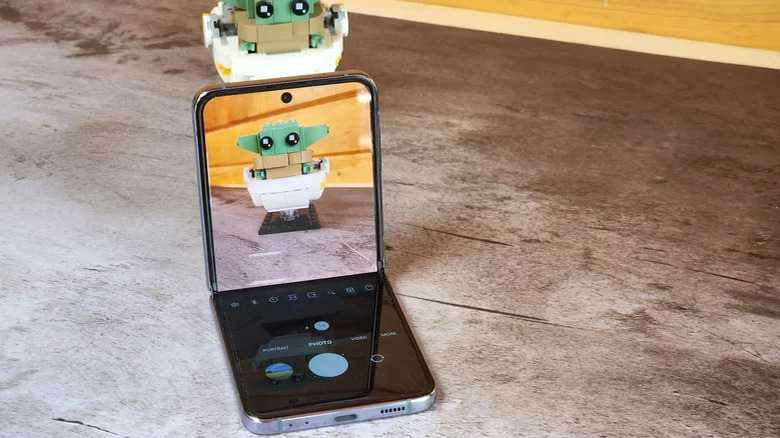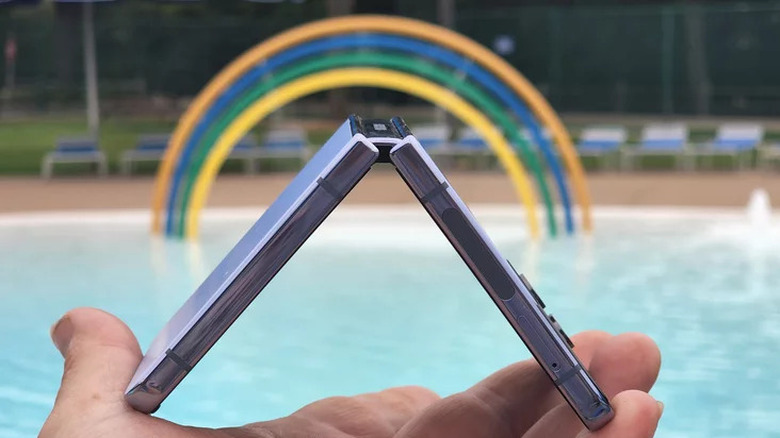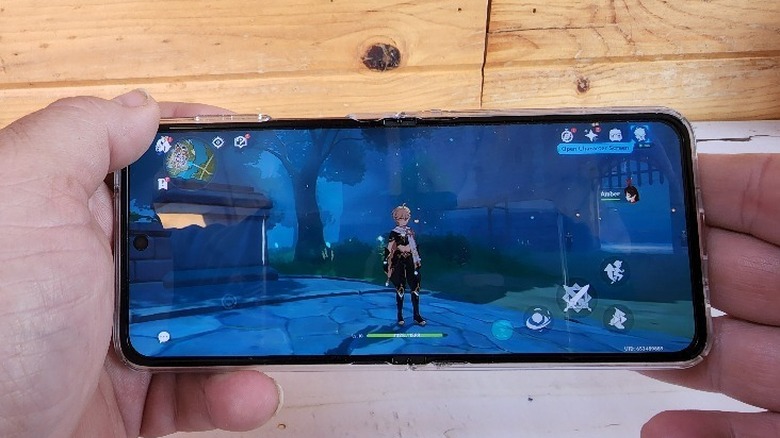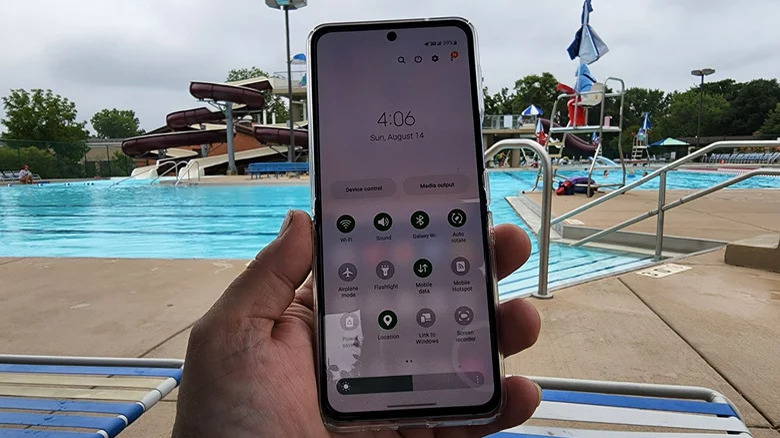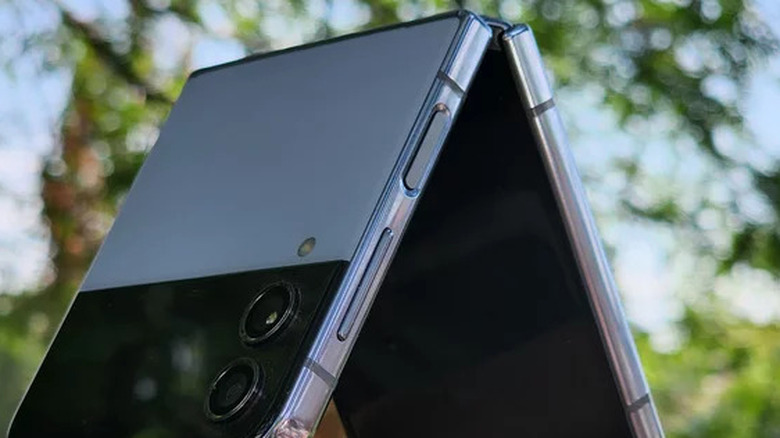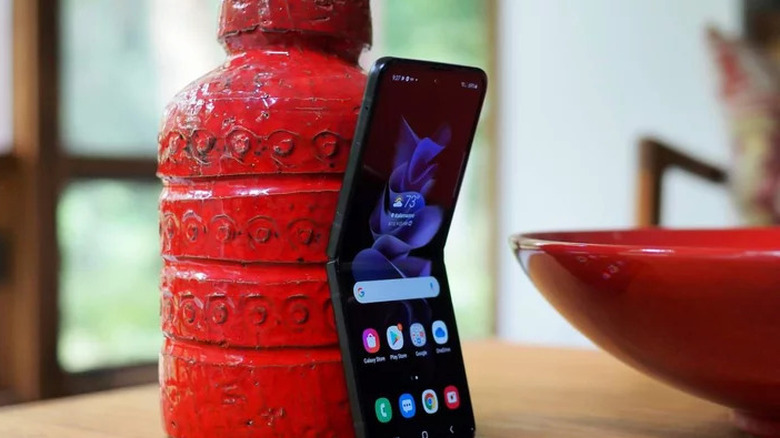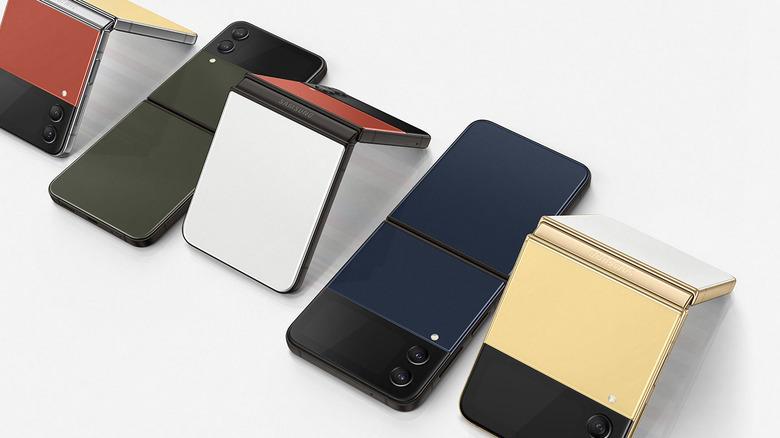Samsung Galaxy Z Flip 5: Features We Want To See
Samsung is firmly established in the foldable smartphone market, with over 62% of all foldable devices sold in 2022 bearing the company's name. This is largely thanks to its rising star in that product range, the Galaxy Z Flip, which commanded a staggering 52% of the market in 2021.
With the company bullish about the prospects of foldable devices, expect to see those sales figures increase as Samsung releases the next generation of foldable smartphones. The new version of the Galaxy Z Flip usually arrives in August, which means that it won't be long before we know what the Galaxy Z Flip 5 will bring.
The release of the Galaxy Z Flip 4 brought more options, a slightly larger battery, the Qualcomm Snapdragon 8+ Gen 1 chips, new ways to use the cover screen, and improved cameras. With a different economic climate, it will be interesting to see what Samsung has planned for the Galaxy Z Flip 5. We've got our own ideas as to what we want to see, so join us below the fold — or is that below the flip?
Better cameras
Samsung outfitted the Galaxy Z Flip 4 with two 12-megapixel cameras, one wide sensor with autofocus, optical image stabilization, and an effective f/1.8 aperture lens, and one ultra-wide with an effective f/2.2 aperture lens with a 123-degree field of view. The pixel size was increased to 1.8 microns from 1.4 microns on the Galaxy Z Flip 3, so they perform better in low-light situations.
Those specifications might have been passable for a flagship device a few years ago, but they're lagging behind the industry as a whole. In fact, they even fall behind Samsung's other devices. We don't think that the 108-megapixel camera from the Galaxy S22 Ultra or the 200-megapixel sensor from the Galaxy S23 Ultra needs to come to the Galaxy Z Flip 5, but it needs some love.
The biggest change Samsung needs to make isn't a megapixel specifications bump because that doesn't necessarily translate to better images. The first thing it should fix is the secondary camera. As we noted in our review, the ultrawide is not grabbing the best pictures compared to the main camera. We'd love to see Samsung ditch the ultra-wide sensor and put either of the capable telephoto cameras from the Galaxy S23 Ultra.
A less visible crease
Every existing foldable from Samsung has one very visible problem -– the crease in the middle of the screen where the foldable folds. While this issue has been improved in successive generations, the crease doesn't have to be there at all.
Rival brands like Xiaomi, Oppo, and Huawei all use a waterdrop-style hinge. These hinges give the flexible AMOLED panel a larger diameter to curve around when folded, keeping a crease from forming and making the foldable thinner. That also makes it so that the two halves of the AMOLED panel can lay flat, with no gap between them.
Samsung tested this style of hinges but decided not to use them as it would reduce the IPX8 waterproof rating the Galaxy Z Flip 4 currently has and make the phone merely water resistant instead. The company always wants to bring improved products to market, so losing any level of waterproofing would be a step backward.
However, engineers in Samsung's labs may have figured out how to implement improved hinges while keeping water out. Recent rumors indicate that the company could be using a new design on the Galaxy Z Fold 5 that will reduce the area affected by the crease, make the inner screen look better, and perform better. We hope these improvements make it to the Galaxy Z Flip 5 also.
A bigger cover screen
The cover screen on the Galaxy Z Flip 4 has 1.9 inches of usable real estate for showing widgets and data and allowing the main cameras to be used for selfies. It's the same touchscreen that was used in the Galaxy Z Flip 3, and it's time for an upgrade. The 1.9-inch screen has a 512x260 resolution, which is fine for reading texts and checking your face when taking selfies. It's large enough for four lines of notifications, which can be interacted with — albeit in a reduced manner than if you were tapping on the same notification on the larger inner screen.
Still, the surface of the Galaxy Z Flip 4 that features the cover screen has roughly four square inches of unused space. That's prime real estate on such a small device, and it would be perfect to put a larger cover screen on. Imagine being able to reply to emails and messages from the cover screen without having to resort to emojis or Bixby.
If rumors from Sammobile are true, that's what will happen on the Galaxy Z Flip 5. A new cover display that covers most of the panel is coming, and it could measure anywhere between three and four inches across. With nearly as much space as half of the inner screen, the cover screen could be used for taking notes, replying to notifications, and more. Samsung could even let apps run on this screen, making it significantly more useful.
More functionality from the cover screen
The cover screen is a useful — if not indispensable — feature of the Galaxy Z Flip 4. It provides a customizable clock that can use photos, GIFs, or videos as its background. There are a handful of widgets that can live on it, including weather and calendar tools, but the only available ones are those from Samsung.
That's a big missed opportunity for third-party developers that keeps the Galaxy Flip from appealing to more users. This issue isn't limited to Samsung, as the Oppo Find N2 Flip also has limited functionality on the cover screen. The rival foldable does have a much larger screen, but it still only shows subject lines from email notifications. The Galaxy Z Flip 5 will be the fourth in the Flip lineup, which means that Samsung can't play early adopters anymore and limit functionality.
With a cover screen rumored to get much larger on the next Galaxy Flip, it's time to let users do more with it. We would love to see Samsung open it up to third-party widget makers so that developers can build new weather, messaging, and email tools for the screen. Let sports fans check scores via a widget, or travelers check their flight status. Even better — open it up all the way and let full apps run on the cover.
Better battery life
The 3,700 mAh battery of the Galaxy Z Flip 4 couldn't last a full day of use in our tests. If the battery can't be increased for space reasons, Samsung needs to figure out how to get more hours out of what they can fit in the case. The good news is that the 3,700 mAh capacity of the Galaxy Z Flip 4 was substantially improved over the Galaxy Z Flip 3's battery, which was 3,300 mAh. The bad news is that it still lags behind other foldables. Oppo's Find N2 Flip has a 4,300 mAh capacity, a 600 mAh difference.
It's clear that there is space for a larger battery capacity inside this form factor. What's unclear is what sacrifices Samsung might need to make to increase it for the Galaxy Z Flip 5. For a company that is often unwilling to remove features once they are added, that's a big ask. Instead, the company could find other ways to increase battery life. Successive Android releases have embraced eco-friendly features to lower battery drain. So do successive processors from Qualcomm, with drops to smaller process nodes bringing performance gains while lowering the power required.
Faster charging
If Samsung is unable to improve the battery life of the Galaxy Z Flip 5, then the company could mitigate the lower battery capacity by substantially increasing the charging speeds. The Galaxy Z Flip 4 has a 25W fast charging limit from the wall and a lower 15W limit when wirelessly charged. That's not only behind the market — it's also behind the company's other flagships, as the Galaxy S23 Ultra has a 45W fast charging speed via USB-C.
Increasing the charging speeds of the Galaxy Z Flip 5 would help it operate as an all-day device by requiring only a few minutes here and there to add enough battery charge to last. The 45W charging hardware from the Galaxy S23 Ultra would be a good start, but Samsung could go further if it wished. Other Android manufacturers have devices charging at 80W, 100W, and 200W. The new Realme GT Neo 5 even operates at 240W from the wall, while the Oppo Find N2 Flip has 44W SuperVOOC charging that can recharge the device in just over an hour.
Fewer Samsung branded apps
Samsung seems to think it needs to compete directly with Apple's self-branded apps to fill its One UI version of Android, and it's time for this to stop. The iPhone is not the only premium competition out there, and research suggests that any iPhone to Android migration is done for budgetary reasons, meaning that former iPhone users are not likely to purchase an expensive phone like the upcoming Galaxy Z Flip 5.
Samsung's version of Android comes with a bewildering array of self-branded apps that could — and should — be trimmed down. Sure, some of Samsung's apps and features are useful, like Samsung DeX, which turns a Galaxy device into a desktop experience when plugged into a monitor, TV, or computer. So is Smart Switch, which makes the process of switching from an iPhone or another Galaxy device simple.
The waters get murkier after that, with many Samsung apps that copy other functionality. So many of these look like carbon copies of iOS apps, such as Find My Mobile instead of Find My iPhone, SmartThings instead of the Home app, and Samsung TV Plus instead of Apple TV.
Galaxy Z Flip 5 buyers know they are using a Samsung device — they don't need to be reminded every few seconds by seeing Samsung branded apps.
A thinner design
Foldable smartphones have a problem – when folded, they are twice the thickness of a normal smartphone. The Galaxy Z Flip 4 is 17mm when folded, nearly twice the thickness of the Galaxy S23 Ultra at 8.9mm. While the Z Flip 4 is still easily pocketable, it does create a noticeable bulge when folded.
Other Android manufacturers are already ahead of Samsung in this regard. The Huawei Mate Xs 2 is only 11.1 mm when folded, the Xiaomi MIX Fold 2 is 11.2 mm, and the Honor Magic Vs 5G is 12.9 mm when folded shut. That's a significant difference in thickness, but that could be attributable to the larger horizontal — as opposed to the Galaxy Z Flip 4's vertical — form factor of these devices, which may offer the manufacturers more opportunities to space things out. The Galaxy Z Flip 5 will likely have similar dimensions to the current device, which doesn't give Samsung much space to work with.
It'll be tough to shave off some thickness to make the Galaxy Z Flip 5 the thinnest Flip so far, but the rumored move to a teardrop hinge would let both screens sit flat, which will hopefully help remove a few millimeters of thickness.
Add an under-screen selfie camera
We'd love for Samsung to put an under-screen selfie camera into the Galaxy Z Flip 5. It could even be the same 4-megapixel camera sensor that was used in the Galaxy Z Fold 4, although it would be substantially better with a higher pixel count.
On the Z Fold line, the under-screen camera left a distracting smear on the AMOLED screen. On the smaller but central selfie camera position on the Galaxy Z Flip 4, that mismatch of screen pixels might not be as distracting. The Galaxy Z Flip 5 doesn't even need a selfie camera on the screen, although it is handy for video calling. Due to its design, it's already set up to use the main cameras for selfies and video calling.
Samsung Display is working on better performance from the under-screen cameras. The current research direction is developing a transparent plastic film to make flexible AMOLED screens. The current polyimide film has a yellow tint, which reduces light transmission while introducing a color cast that has to be corrected for by the camera software.
More storage space
Samsung offers three storage options when buying a Galaxy Z Flip 4: 128 GB, 256 GB, and 512 GB. That's in line with its usual practice of offering different storage tiers for differing devices, but it's not enough for the storage demands of video and image capture.
It's also not enough for the growing number of apps the average user has installed. Smartphone users in the United States use an average of 46 apps monthly on their devices, and that's not even taking into account installed apps that aren't being accessed. Apps typically take up between 40MB and 1GB of space, which means that most users see anywhere between 1.86GB and 46.5GB taken up by installed apps.
It feels odd to intentionally limit storage tiers on a flagship foldable. The Galaxy Z Fold 4 has a 1 TB maximum option, and we'd like to see that offered on the Galaxy Z Flip 5.
Better screens
Samsung has its own research, development, and manufacturing arm for display technology, Samsung Display. This division has created some of the best OLED screens in the industry, with multiple manufacturers using Samsung displays in their smartphones.
The Galaxy Z Flip 5 needs to build on that advantage and include a better screen than the Z Flip 4. That could be as simple as increasing the pixel count above FHD. The flip side of that equation is that a higher resolution screen requires more power, so it would need software tweaks to display different resolutions to save battery life.
Samsung does have other options in the works, which could be used for foldable phones. Samsung Display is making its QD-OLED panels more flexible by removing the glass substrate on which the quantum dot layer gets printed, and that could mean that QD-OLED could be used in a future Galaxy Z Flip device.
One UI improvements
Samsung's One UI is the tweaked version of Android that runs on all of the company's smartphones. While there are specific features for foldable devices, it's important to note that the Galaxy Fold line has different tweaks than the Galaxy Flip models.
The biggest of these differences is seen on the Galaxy Z Flip 4 with the FlexCam, which turns the device into an impromptu tripod when opened halfway. It works not only with Samsung's Camera app but with third-party apps like Instagram, Facebook, and WhatsApp as well. It also turns the foldable into camcorder mode when held sideways.
Samsung could go much further to support apps in flex mode or split screen modes. The fold is a natural way of showing two apps at once so the user can multitask. It may not have the same real estate as the larger Galaxy Z Fold devices, but the Flip still has plenty of screen space for reading and taking notes.
Move the fingerprint sensor
The side-mounted fingerprint sensor, but it's too high when the Galaxy Z Flip 4 is unfolded. The 9:22 aspect ratio of the phone when it is unfolded means it's a stretch to use the sensor for security features like screen unlock and banking apps one-handed.
The Galaxy Z Flip 5 doesn't have to be like this. The fingerprint sensor could easily be moved to the bottom half of the device, especially since the halves are next to each other when folded. That would make it much easier to use one-handed, although Samsung may have other reasons for positioning the sensor where it is on the Galaxy Z Flip 4.
For instance, the sensor might be positioned on the top because the hinge is easier to open with two hands, and a lower sensor interferes with that action. Further, an under-screen fingerprint sensor might take up too much precious battery space, which is already at a premium.
More grip
The Z Flip 4 has Samsung's stylish, curved edges, even if they are boxier than on its other smartphones. However, those curves can make it hard to hold the phone or to open it one-handed. The polished metal of the side rails is also very slippy, adding up to a foldable smartphone that sometimes feels like a bar of soap.
The easiest way to fix this is to put a case on the Galaxy Z Flip 5, which is probably a wise choice. That will add more protection to the foldable phone, although it does cover up the signature design of the flagship Samsung smartphones. Making the next Galaxy Z Flip easier to hold could reduce user anxiety about dropping the phone, possibly eliminating the need to encase the device in protective plastic.
We suggest that Samsung can sacrifice some style for a little grip, with roughed edges like the sandstone texture of OnePlus devices.
More Bespoke options
When Samsung released the Galaxy Z Flip 3, it also opened the ability to create customized designs through its Bespoke collection. This special ordering method gave the option of 49 color combinations. When the Galaxy Z Flip 4 rolled out, Samsung increased the number of Bespoke combinations to 75. This is a big deal, as most smartphones only offer a few preset color options.
We're not knocking the customization options Samsung already has, but it could do more. The configuration tool has three options for the side rails, all shiny metal. The six options for the top and bottom glass are the same six colors, and all of them are the same type of glass.
The Galaxy Z Flip 5 could go so much further. Imagine differing materials for the top and bottom halves, like metals or leather. Samsung could also include more options for the side rails in exotic metals or introduce different color options that diverge from gold, silver, and black. Including an array of customizable features — alongside the much-needed improvements discussed above — could help the Galaxy Z Flip 5 stand even taller in an increasingly crowded market.

